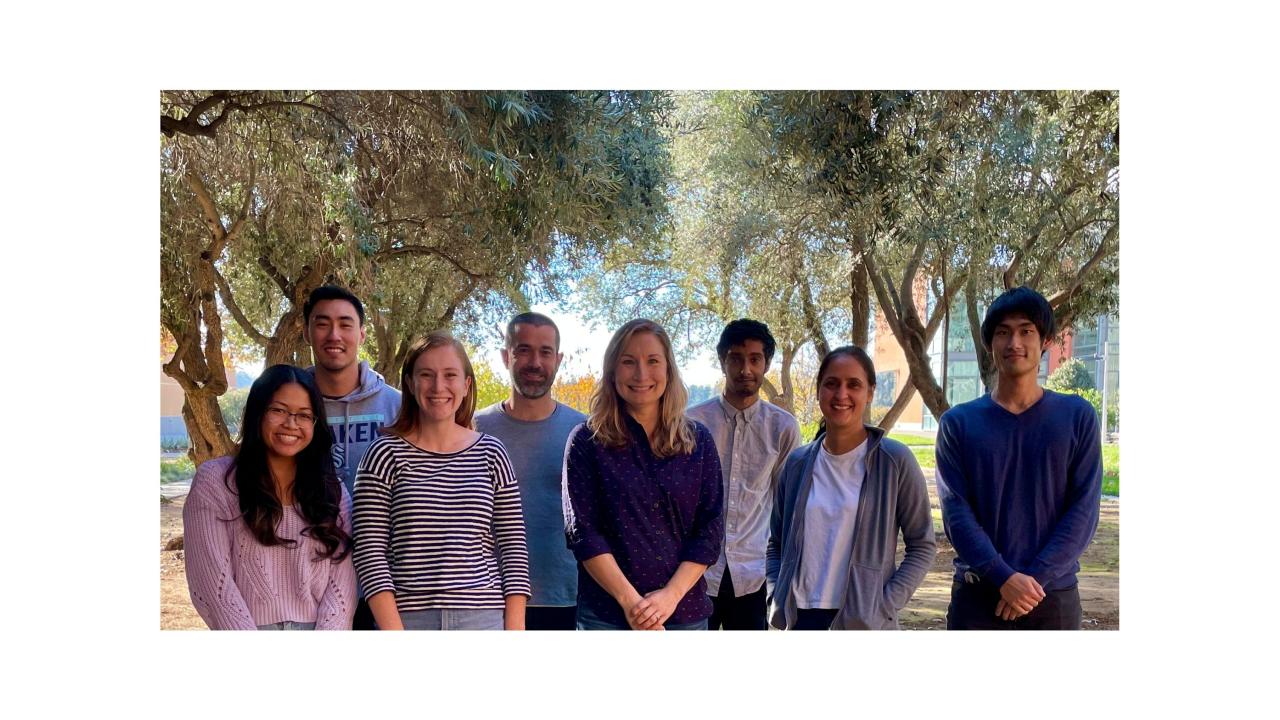
The people: Research in the Montpetit lab is driven by a dedicated group of scientists at the undergraduate, graduate, postdoctoral, and staff levels. Current members of the lab arrived here at UC Davis from other parts of California, the US, Canada, and Japan.
Ben Montpetit, the principal investigator of the group, obtained his PhD in 2007 from the University of British Columbia, which was followed by postdoctoral work at the University of British Columbia and the University of California, Berkeley. From 2012-2016, Ben worked as an Assistant Professor at the University of Alberta in the Department of Cell Biology. In the summer of 2016, he moved to the Department of Viticulture and Enology at the University of California at Davis. Throughout his studies, and now in his own group, research focuses on understanding the biology of Saccharomyces cerevisiae and how yeast cells engage with their environment, both chemical and microbiological.
The issue: Saccharomyces cerevisiae, the budding yeast, is central to many aspects of food and beverage production, including wine and beer, as well as the production of biofuels and medically important drugs. These processes expose yeast to changing environmental conditions, that are often stressful to the yeast, so cells must adapt to maintain proper function. Adaptation to environmental conditions, and to acute stresses (e.g. rapid changes in conditions), requires yeast cells to sense their environment, rapidly process and integrate the various types of information they receive, and efficiently respond by changing what the cell is doing and producing.
To adapt and change cellular function most often requires a cell to change what genes are being expressed. Genes provide the information needed to make proteins, which are the workhorse of the cell, with different proteins providing different functions and capabilities. For example, for a yeast cell to metabolize glucose, specific genes need to be turned on, but when glucose is absent those genes are not needed and should be turned off. In this way, turning genes on and off, allows the cell to be efficient and to adapt, survive, and thrive in different environments.
In a grape juice fermentation, failure to respond or adapt to changing environmental conditions would result in a slow or stuck fermentation with altered metabolic outputs that can give rise to the production of off-flavors. These problems result in lower wine quality, and less efficient processes, and are costly to correct. To date, environmental factors such as temperature, grape variety, and must nitrogen levels have been studied to better understand wine fermentation variability, yet it is still difficult to predict or account for variations seen in fermentation efficiency and outcomes. Thus, our enology-focused research aims to provide a more complete understanding of the yeast–environment interaction and to link this to initial juice/must conditions, fermentation performance, and the resulting chemical and sensory characteristics of the wine.
The research: Essential to fermentation, production of flavor compounds, microbial stability, and quality of wine are the metabolic activities of yeast. The efficiency and outcome of the fermentation process are dictated by the complex environment in which the yeast functions. For example, fermentation outcomes will be impacted by factors specific to the must (e.g. grape variety, nutrient levels, other microbes, and presence of inhibitory compounds) and vinification process (e.g. temperature of fermentation, air exposure, mixing, and vessel type used). Given the large number of factors, it is not surprising that the outcome of a fermentation can be highly variable. Over the past five years, we have studied yeast gene expression patterns at the UC Davis Teaching & Research Winery using the same yeast inoculum, identical fermentation conditions, and musts from the same grape clone (Pinot noir). The difference being that the grapes were harvested from vineyards grown across 800 miles of the west coast and from near sea-level to 1500 feet in elevation.
The gene expression data produced from these efforts are being mined for patterns that reflect specific nutrient imbalances or cellular stresses. In other words, this data is being used to infer what the yeasts are experiencing in each fermentation environment and how they are responding. Using such data, we can identify metabolic pathways in yeast that are altered in a must-specific manner that will be indicative of vineyard specific factors that impact fermentation kinetics and flavor compound production. To date, this project is providing critical information about site, and associated environmental factors, that impact fermentation outcomes. These data support the existence of unknown site-dependent factors, which give rise to differences in initial must composition, impacting both the production of flavor compounds and fermentation kinetics. Publications related to this work are available free to everyone at the following links:
Significance to Industry: Through highly controlled and reproducible research, we aim to provide a scientific understanding of the contributions of growing site and must conditions to the chemical and sensory characteristics of wine. With respect to industry, this type of work can identify factors in must, and specific yeast metabolic pathways, that could be monitored to understand and manage fermentation outcomes. Long term, our studies of yeast fermentation kinetics will identify initial must composition factors, provide a whole cell view of the yeast response to different musts, and identify yeast metabolic pathways that could be targeted to control yeast fermentations. These data, with future work, are expected to provide the foundation of knowledge needed to accurately predict yeast fermentation kinetics and flavor compound production, which could ultimately guide viticulture decisions to produce grapes that deliver the desired initial must composition and fermentation outcomes.
We would like to acknowledge support for this work from Jackson Family Wines, Lallemand Oenology, and the College of Agricultural and Environmental Sciences at UC Davis.
